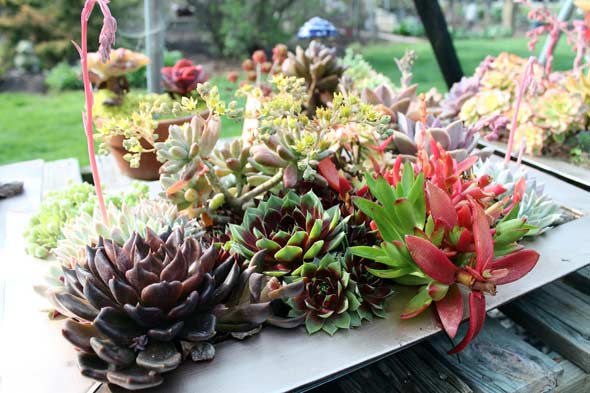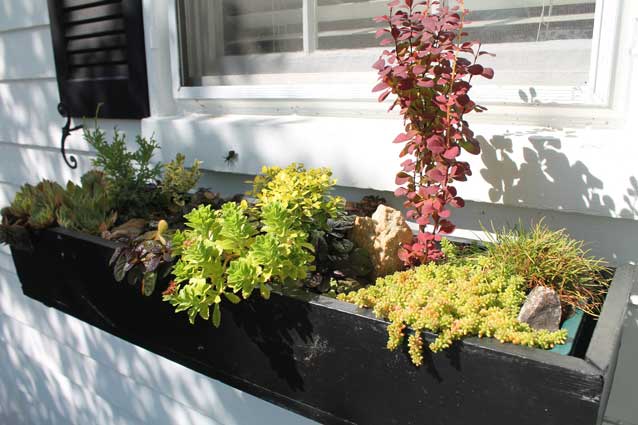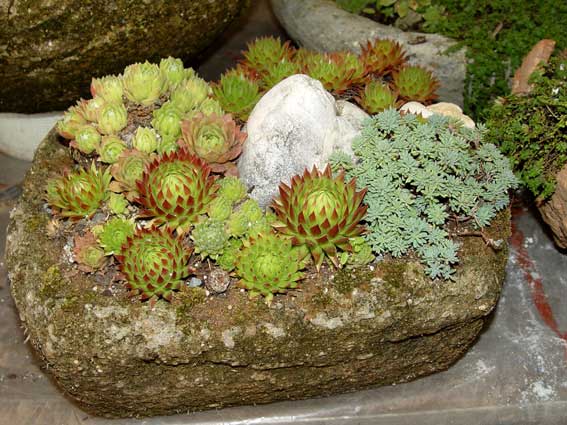How it Works: Preen Garden Weed Preventers
Here's how our Garden Weed Preventers prevent weeds before they even sprout rather than killing them after they’ve already had the chance to grow.
Short on time, but love to have plants growing in your garden? Care-free, drought-tolerant succulents are the answer, especially in containers. They thrive on neglect, even when you are on vacation. You’ve already discovered that growing in containers is a great way to sidestep weeds, animal problems, and lousy soil but the daily time-consuming chore of watering pots of flowers and vegetables is just not in your schedule. You’ll find that containers of succulents are ideal to dress up your property with little care.
What are succulents? This is a group of fleshy-leafed plants that have the ability to suck up moisture from the soil when it’s available and store it in their plump leaves for when it’s not. They tolerate little and infrequent watering especially in containers, but also in the landscape in rock gardens, along hot driveways, on sunny banks, and at the front of any hot, sunny landscape bed. No wonder they’ve become such a hot item in today’s time-pressured world. Unlike plant families such as roses or hydrangeas, succulents aren’t botanic relatives but plants with similar characteristics – namely, ones with fleshy foliage or bulbous stems that give them the ability to survive dry conditions. Among the best known are various species of cactus, aloes (Aloe species), sedums (Sedum spp.), echeverias (Echeveria spp.), and “hens and chicks” (a type of Sempervivum).

© George Weigel
Succulents have become popular recently not just for their low watering needs but also because they’re compact, versatile, colorful, not prone to bugs or disease, and seldom in need of spraying. Even deer and bunnies usually ignore them.
The most important aspect of growing succulents is good drainage. In containers, this is particularly important. If you’re going to kill a potted succulent, it’s most likely due to root rot in overly wet soil. Containers should not be deep and must have adequate drainage holes in the bottom. The soil must be extremely well-drained – light and aerated with generous amounts of “gritty” material (about 25 percent) such as gravel, coarse sand, or bagged mineral fragments. The commercial cactus mix is another good option. Water until it comes out of the bottom, then don’t water again until the soil has dried. Typically that means every 5 to 7 days in an outdoor pot.

© George Weigel
Although succulents can thrive in almost any container with good drainage, currently a particularly trendy type is a hypertufa pot or trough. Hypertufa is a man-made material crafted to look like porous stones. Typically it’s made from a wet mix of peat moss, perlite, Portland cement, and reinforcing fibers, then left to dry. The result is a pot that’s almost as durable as concrete but much lighter in weight. The mix can be colored with dye and the pots adorned with glass, ornaments, rope, or other materials to give whatever “personality” you’d like. Hypertufa pots are often sold in garden centers if you’re not up to making your own.
Be aware that some succulent plants are more winter hardy than others. Some, such as sedums, ice plants (Delosperma), and hens and chicks, are able to withstand freezing winter weather, while others survive only in frost-free regions. Freeze-susceptible ones include kalanchoe, aeonium (Aeonium spp.), jade plant (Crassula ovata), string of pearls (Senecio rowleyanus), and most aloes, cactuses, and echeverias. These should be moved inside (they make interesting house plants) to survive winter in cold regions or else be replaced each spring. Check plant labels for their hardiness ratings. Most succulents also prefer full sun… but not all. So check the plant labels for that as well before deciding on which plant for which pot.

© George Weigel